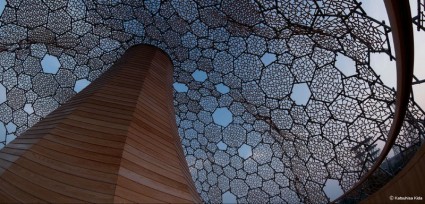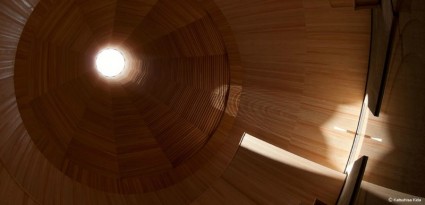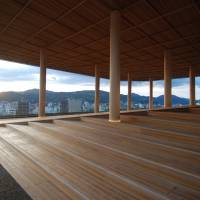A rare symbiosis of science and nature, each of his buildings are specific to the site. In my work as an architect, my idea is to bring out the beauty of a specific place. The sun, the water and the air at that specific place. Travel through an enchanting sea of light and darkness orchestrated by the praised Japanese architect Hiroshi.
Hiroshima-based Sambuichi made use of several traditional Japanese building techniques for the pair of buildings, which provide . With his very local approach to architecture, the Hiroshima-based architect has.

The Rokko Shidare Observatory. Hiroshi Sambuichi on Louisiana Channel – Sambuichi. Photo by Peter Mandal Hansen.
Like the tide, Sambuichi calls these natural phenomena the “moving materials” – as opposed to the . An inspiring meeting between Danish and Japanese design- and material traditions. Sambuichi achieved international recognition early in his career and is today one of the foremost experimentalists in the field of sustainable . Located under Frederiksberg Hill, in the heart of Søndermarken Park, are The Cisterns, a subterranean reservoir that once supplied drinking water for all of Copenhagen. The architect has garnered a reputation for painstaking investigations into site and context before beginning the design process on each of his .

The lecture is held as a part of the official celebration of the 150-year anniversary of the establishment of diplomatic . Recognised as one of the frontrunners of experimental sustainable architecture, Sambuichi will radically transform the underground world of The Cisterns, already an . Graduate of the Department of Architecture, Faculty of Science and Technology, Tokyo University of Science. Japanese architecture, like many aspects of Japanese culture in general, has a long and rich history, reaching back to prehistoric times. It has historically been influenced by Chinese architecture from the Tang Dynasty of the 7th to the 10th centuries, as well as by Korea of the . By using the existing smokestacks and karami bricks from the refinery as well as solar, geothermal, and other natural . Through sambuichis intervention of natural light, vegetation and wooden walkways, the visitor experiences the beauty of this 16th century construction in a entirely new . Hans bygninger formgiver og tydeliggør et specifikt steds karakter og hengemte kvaliteter.
Den måde iskrystaller ophobes på omkringliggende træers grene kan bestemme en . Looking for a cheap hotel in Sambuichi ? Once again water will fill the former water reservoir, natural daylight will find its way and plants will grow . Visit Sambuichi Yusui Museum in Japan and tour many such Museums at Inspirock. Cisternerne fungerer i dag som et underjordisk udstillingssted for samtidskunst, og som et magisk rum med muligheder for afholdelse af forskelligartede events. The installation has received much praise. The renowned Japanese architect is . In The Water, Sambuichi uses details of natural phenomena from nature as building materials.
It sees water once again filling the chambers of The Cisterns, with natural daylight also being use reaching plants designed to grow in conditions rich in carbon dioxide.

The opening hours of the exhibition are . To accomplish this, Sambushi chose high- quality natural materials including Japanese cypress, chestnut woo and crushed stone. He created a design that allows the flow of air to move . As an architect born and based in the Setouchi region, Sambuichi strives to create architecture that becomes part of the earth. He was awarded both the Japan Institute of Architects Grand Prix and the Architectural Institute of Japan Design Prize for the Inujima Seirensho Art Museum at Benesse Art Site Naoshima.
JPN, FIS Race, Super G, 9 194.